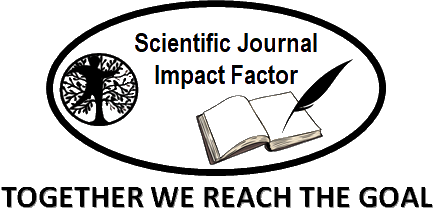REVIEW ON MUSHROOM CULTIVATION AND ITS MEDICINAL USES
Abstract: This paper's goal is to examine and assess the body of research on the production and culture of mushrooms, as well as its many health advantages and possible applications. The relevant literature was gathered using a methodical approach. 26 research articles in all, published between 1970 and 2022, were chosen and used for this review. Mushroom cultivation has emerged as a sustainable agricultural practice with significant economic and therapeutic potential. Edible and medicinal mushrooms such as Agaricus bisporus (white button), Pleurotus ostreatus (oyster), and Ganoderma lucidum (reishi) are widely cultivated across the globe for their nutritional value and bioactive compounds. The cultivation process involves low-cost substrates like agricultural waste, making it eco-friendly and resourceefficient. Medicinal mushrooms are rich in polysaccharides, triterpenoids, antioxidants, and immune-modulating compounds, which have demonstrated therapeutic effects against various diseases, including cancer, diabetes, cardiovascular disorders, and microbial infections. Scientific research has validated the immunostimulatory, anti-inflammatory, and anti-tumor properties of many mushroom species.
Keywords: Cultivation, Sustainable, Economic, Therapeutic, Antioxidant
Author: Priya Kumari, Kshitij Pandey and Swechha Pandey
doi: https://doie.org/10.10346/AE.2025809323
Reference: Abdel-Shafy, H. I. & Mansour, M. S. M. (2016). A review on polycyclic aromatic hydrocarbons: source, environmental impact, effect on human health and remediation. Egyptian Journal of Petroleum 25:107−23. Adams, L. S.; Phung, S.; Wu, X.; Ki, L. & Chen, S. (2008). White button mushroom (Agaricus bisporus) exhibits antiproliferative and proapoptotic properties and inhibits prostate tumor growth in athymic mice. Nutr Cancer. 60, 44–56. [CrossRef]. Ahlawat, O. P.; Gupta, P.; Kumar, S.; Sharma, D. K. & Ahlawat, K. (2010). Bioremediation of fungicides by spent mushroom substrate and its associated microflora. Indian J. Microbiol. 50:390−95. 39World Journal of Biology Pharmacy and Health Sciences, 2023, 15(02), 001–056 Ahmad, N.; Bansal, R.; Rastogi, A. K. & Kidwai, J. R. (1984). Effect of PHA-B fraction of Agaricus bisporus lectin on insulin release and 45Ca2+ uptake by islets of langerhans in vitro. Acta Diabetol. Lat. 21, 63–70. [CrossRef] Ahmed, O. M.; Ebaid, H.; El-Nahass, S.; Ragab, M. & Alhazza, I. M. (2020). Nephroprotective Effect of Pleurotus ostreatus and Agaricus bisporus Extracts and Carvedilol on Ethylene Glycol-Induced Urolithiasis: Roles of NF-κB,p53, Bcl-2, Bax and Bak. Biomolecules. 10, 1317. [CrossRef] [PubMed]. Ahmed, S.; Kadam, J. A.; Mane, V. P.; Patil, S. S. & Baig, M. M. V. (2009). Biological efficiency and nutritional contents of Pleurotus florida (Mont.) Singer cultivated on different agrowastes. Nature and Science. 7(1): 44-48. Ahn, H.; Jeon, E.; Kim, J.; Kang, S.; Yoon, S.; Ko, H.; Kim, P. & Lee, G. (2017). Lentinan from shiitake selectively attenuates AIM2 and non-canonical inflammasome activation while inducing pro-inflammatory cytokine production. Sci. Rep. 7,1314. [CrossRef]. Ajith, T. A. & Janardhanan, K. K. (2001). Antioxidant and anti infammatory activities of methanol extract of Phellinus rimosus. Indian J Exp Biol. 39:1166-9. Ajith, T. A. & Janardhanan, K. K. (2002). Antioxidant and antihepatotoxic activities of Phellinus rimosus (Berk), Pilat. J Ethnopharmacol. 81:387-91. Ajith, T. A. & Janardhanan, K. K. (2003). Cytotoxic and antitumor activities of a polypore macrofungus, Phellinus rimosus (Berk) Pilat. J Ethnopharmacol. 84:157-62. Ajith, T. A. & Janardhanan, K. K. (2006). Chemopreventive activity of a macrofungus Phellinus rimosus against N=nitrosodiethylamine induced hepatocellular carcinoma in rat. J Exp Ther Oncol. 5:309-21. Ajith, T. A. & Janardhanan, K. K. (2007). Indian medicinal mushrooms as a source of antioxidant and antitumor agents. J. Clin. Biochem. Nutr. 40, 157–162. [CrossRef]. Akihisa, T.; Franzblau, S. G.; Tokuda, H. & Tagata, M. (2005). Antitubercular activity and inhibitory effect on Epstein-Barr virus activation of sterols and polyisoprenepolyols from an edible mushroom, Hypsizigus marmoreus. Biol Pharm Bull. 28:1117-9. Akoi, T. (1984). Lentinan. Immunology Studies: Immune modulation agents and their mechanisms. In: Femchel RL, Chirgis MA.editors.Vol.25. Marcel Dekker, Inc., New York. p. 62-77. Alam, N.; Khan, A.; Hossain, M. S.; Amin, S. R. & Khan, L. A. (2007). Nutritional analysis of dietary mushroom Pleurotus florida Eger and Pleurotus sajor-caju (Fr.) Singer. Bangladesh Journal of Mushroom. 1(2):1-7. 24. Alexopolous, C. J. & Mims, W. (1979). Introductory Mycology, Third, John Wiley., Chichester, UK. Ali, N. A.; Mothana, R. A. A.; Lesnau, A.; Pilgrim, H. & Lindequist, U. (2003). Antiviral activity of Inonotus hispidus. Fitoterapia. 74, 483–485. Alonso, E. N.; Ferronato, M. J.; Fermento, M. E.; Gandini, N. A.; López Romero, A.; Guevara, J. A.; Facchinetti, M. M. & Curino, A. C. (2018). Antitumoral and antimetastatic activity of Maitake D-fraction in triple-negative breast cancer cells. Oncotarget. 9, 23396–23412. [CrossRef]. Alonso, E. N.; Ferronato, M. J.; Gandini, N. A.; Fermento, M. E.; Obiol, D. J.; López Romero, A.; Arévalo, J.; Villegas, M. E.; Facchinetti, M. M. & Curino, A. C. (2017). Antitumoral effects of D-fraction from Grifola frondosa (Maitake) mushroom in breast cancer. Nutr. Cancer. 69, 29. [CrossRef]. Chandha, K. L. & Sharma, S. R. (1995). Advances in horticulture mushroom, Malhotra Publication House, New Delhi. Chang, C.; Jiu-Gang, X.U.E.; Kai-Song, Z.; Yan, L. I.; Han-Xing, Z. & Chang-Kai, Z. (2003). Purification and characterization of flammulin, a basic protein with anti-tumor activities from Flammulina velutipes. J. Chin. Pharm. Sci. 12, 60. Kakraliya, S. S. (2020). Economic Importance of Mushroom and Their Uses. Just Agriculture-The Future of Agri Innovation. Sher-e- Kashmir University of Agricultural Science and Technology of Jammu-Jammu. ARTICLE ID: 025. Marshall, E. & Nair, N. G. (2009). Make money by growing mushrooms. Food and Agriculture Organization of the United Nations (FAO), Rome. Mizuno, T.; Zhuang, C.; Abe, K.; Okamoto, H.; Kiho, T.; Ukai, S. et al. (1999). Antitumor and hypoglycemic activities of polysaccharides from the sclerotia and mycelia of Inonotus obliquus (Pers.: Fr.) Pil. (Aphyllophoromycetideae). Int J Med Mushrooms. 1:301-16. Venturella, G.; Ferraro, V.; Cirlincione, F. & Gargano, M. L. (2021). Medicinal Mushrooms: Bioactive Compounds, Use, and Clinical Trials. Int. J.Mol. Sci. 22, 634. https:// doi.org/10.3390/ijms22020634. Oliver, T.; Isaac, N.; August, T.; Woodcock, D. B. & Roy, J. (2015). Bullock, Declining resilience of ecosystem functions under biodiversity loss, Nat. Commun. 6, 10122, https://doi.org/10.1038/ncomms10122. Jeitler, M.; Michalsen, A.; Frings, D.; Hübner, M.; Fischer, M.; Koppold-Liebscher, D. A.; Murthy, V. & Kessler, C. S. (2020). Significance of medicinal mushrooms in integrative oncology: A narrative review. Front. Pharmacol. 2020, 11, 580656. [CrossRef]. Devkota, S.; Fang, W.; Arunachalam, K.; Phyo, K. M. M. & Shakya, B. (2023). Systematic review of fungi, their diversity and role in ecosystem services from the Far Eastern Himalayan Landscape (FHL). Review Article. Published by Elsevier Ltd. Heliyon9(2023)e12756. https://doi.org/10.1016/j.heliyon.2022.e12756.
PDF




